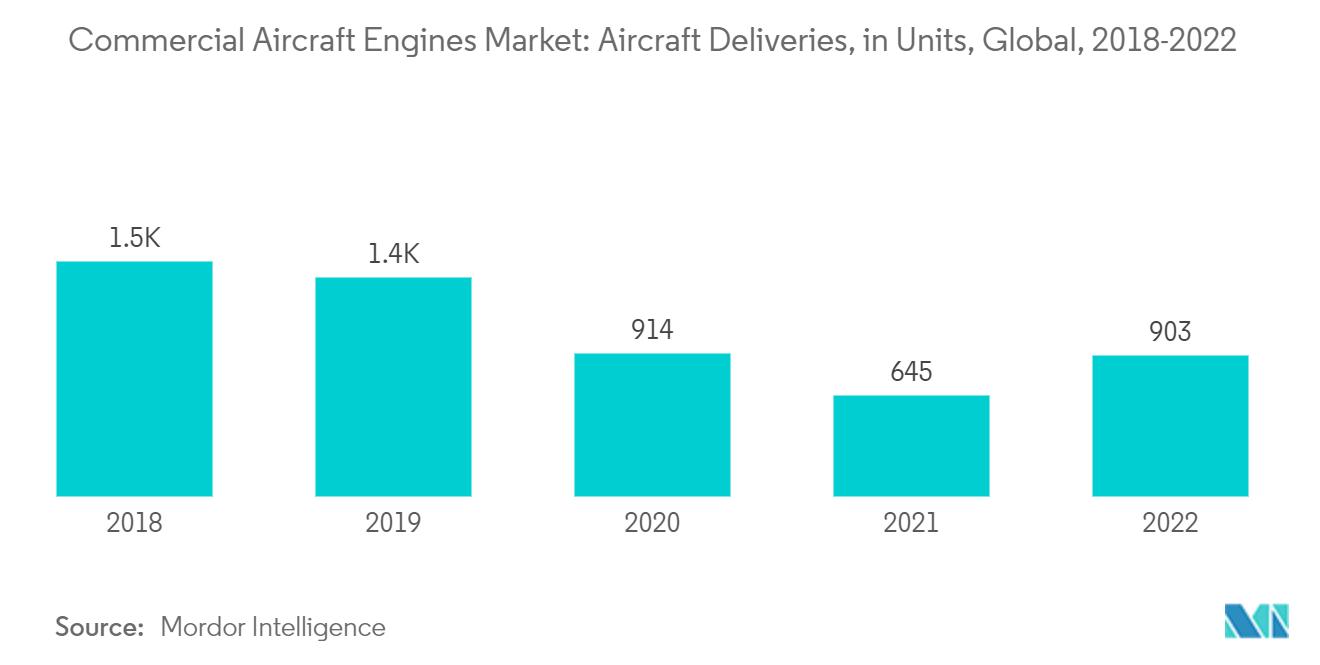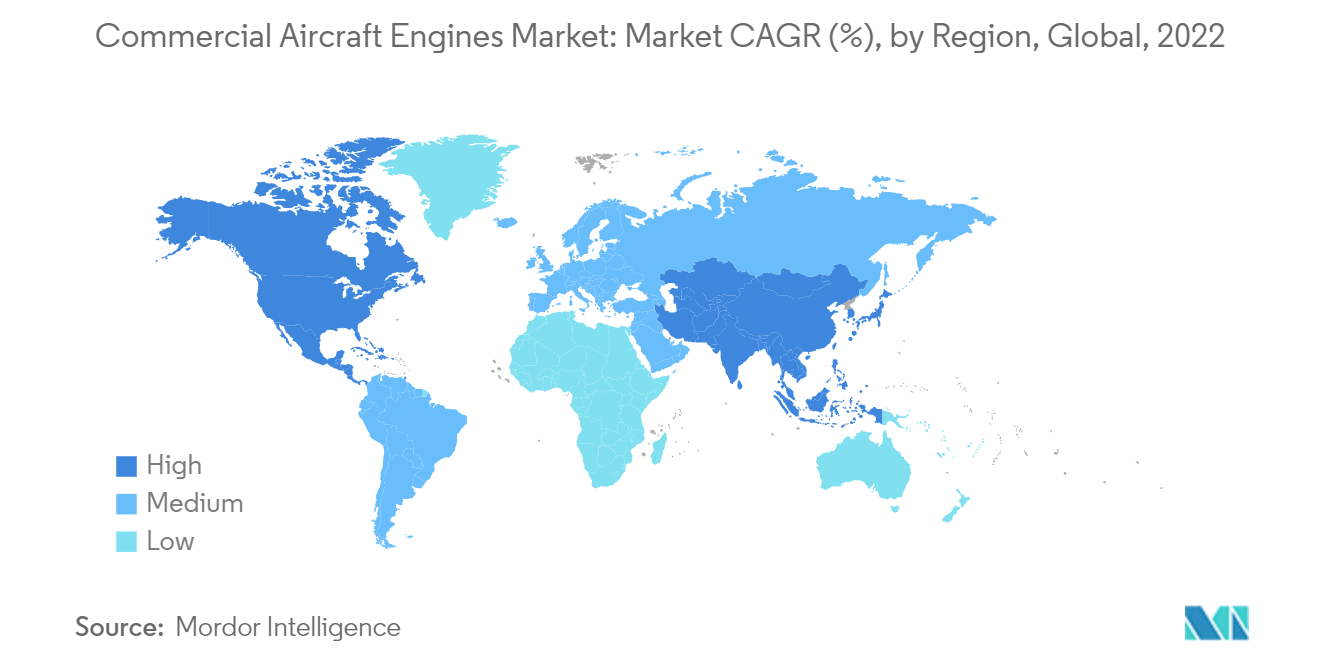Market Trends of Commercial Aircraft Engines Industry
Wide-Body Aircraft Segment is Anticipated to Grow with the Highest CAGR During the Forecast Period
A wide-body aircraft, called twin-aisle aircraft, is an airliner with a fuselage wide enough to accommodate two passenger aisles with seven or more seats abreast. The typical fuselage diameter is 5 to 6 m (16 to 20 ft). Boeing B777X and Airbus A350 are examples of wide-body aircraft in service across various world geographies.
Airlines use wide-body aircraft to ferry goods. The high demand for such aircraft was expected to continue until 2023. Manufacturers developed advanced engines to meet the demand. For instance, in February 2023, Air India, a part of Tata Sons, signed a procurement contract for 40 GEnx-1B and 20 GE9X engines and a multi-year TrueChoice engine services agreement with GE Aerospace. The deal was signed in coordination with the airline's firm order for 10 Boeing B777X and 20 Boeing B787 aircraft.
In November 2023, Emirates announced an order for 202 GE9X engines to power its upcoming fleet of Boeing B777X aircraft. The order also includes a long-term services agreement. This brings Emirates’ total order for GE9X engines to 460. In May 2022, the Australian carrier Qantas announced its commitment to a deal for 12 Rolls Royce Trent XWB-97 powered A350-1000 aircraft that will support the airline's aim to operate the world's longest commercial non-stop flights, allowing passengers to fly direct between London and New York to the Australian east coast cities of Sydney and Melbourne. This leads to aircraft engine procurement partnerships with airlines in the industry. The focus is on wide-body aircraft that are ideal for intercontinental travel. With multiple partnerships and innovations by aircraft engine manufacturers for wide-body aircraft, this segment is expected to grow significantly during the forecast period.

Asia Pacific Will Showcase Remarkable Growth During the Forecast Period
Asia Pacific is projected to show the highest growth during the forecast period. Fleet expansion plans of airlines and increasing cargo services are accelerating the procurement of new passenger and cargo aircraft, which will possess a positive stance on the aircraft engine market during the forecast period.
Currently, the commercial aircraft produced in China, including the latest C919, are equipped with foreign engines. However, the country has been trying to develop a home-grown alternative as it seeks to cut its dependence on foreign sources of sophisticated technology. China is progressing with the development of CJ1000, a turbofan jet engine designed to power the homemade C919 narrow-body aircraft in the next three to five years.
In June 2023, China Airlines made an order for 17 GEnx-1B engines and spares from General Electric (GE) Aerospace to power its growing fleet of Boeing 787 Dreamliner commercial jets. The Airline currently operates a fleet of 87 aircraft, including 66 passenger jets and 21 freighters.
According to a report by the Indian Directorate General of Civil Aviation (DGCA), in 2022, India's total air passenger traffic reached more than 105 million passengers. According to the International Air Transport Association (IATA), India is expected to overtake China and the United States as the world's third-largest air passenger market in the next ten years by 2030. Hence, the airlines are undertaking massive procurement plans to expand their fleet and address the growing market opportunity. On this note, in June 2023, IndiGo ordered 500 Airbus A320 Family aircraft. This IndiGo order-book comprises a mix of A320NEO, A321NEO and A321XLR aircraft. Such fleet modernization plans of the airlines and aircraft operators are expected to drive the growth of the commercial segment of the aircraft engines market during the forecast period.


